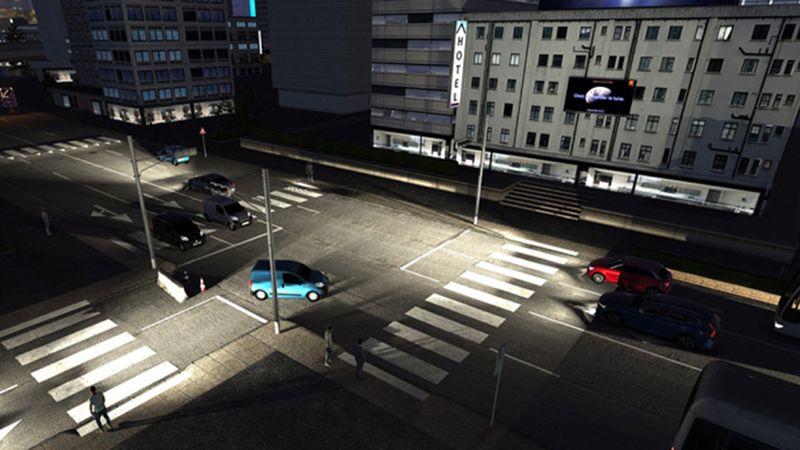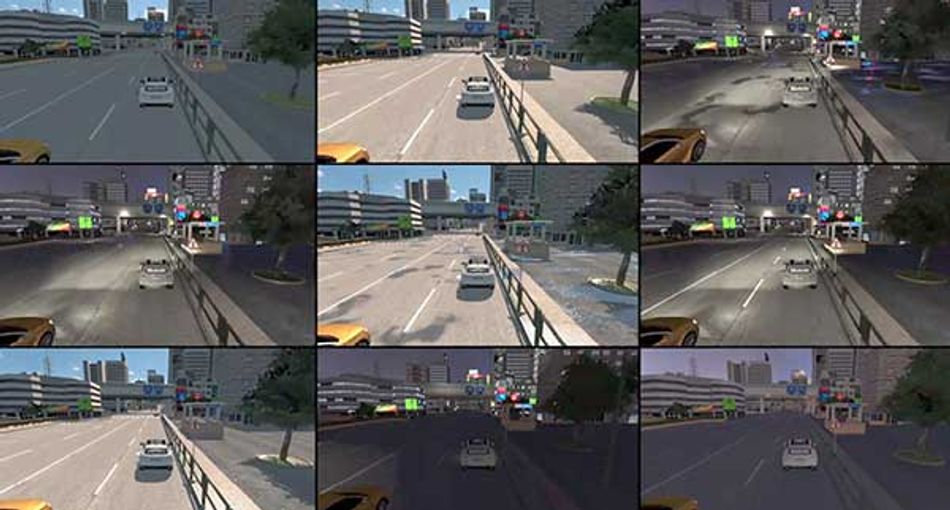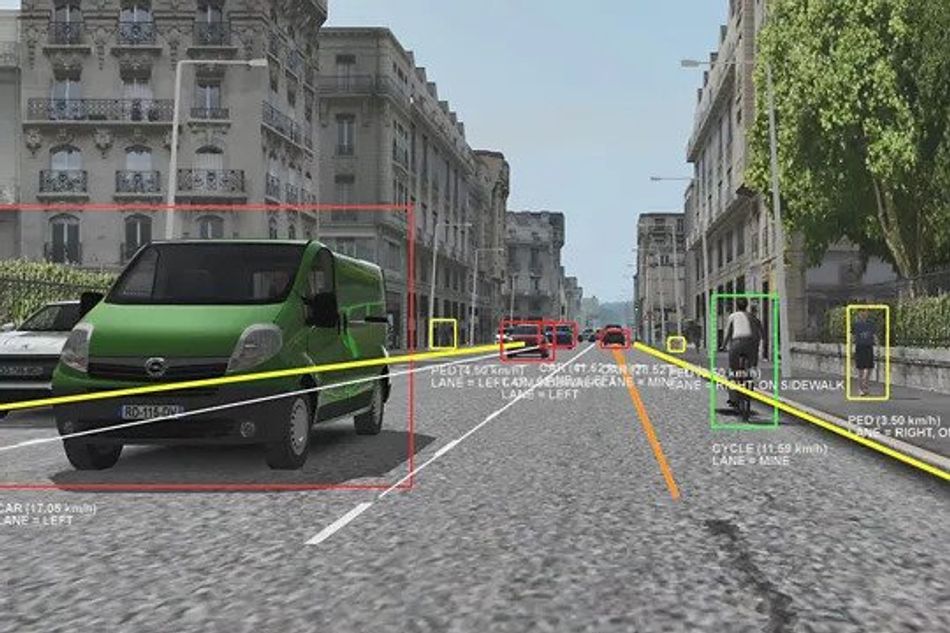Reducing the carbon footprint of autonomous vehicles with simulation technologies.
Simulation supports the sustainability of AVs by bringing down the environmental costs of developing self-driving cars.

Image credit: Ansys
Together with Ansys, a developer of simulation software, we are creating a series of content about the technologies that make sustainable transportation possible. Read the foundation article of the series here, and our introduction to the Indy Autonomous Challenge here.
A recent paper by researchers at the University of Massachusetts, Amherst, found the process of training several common large AI models can emit more than 283000 kilograms of carbon dioxide equivalent. That’s approximately five times the lifetime emissions of the average internal combustion engine American car - including the manufacture of the vehicle itself. While the increase of Green AI will mitigate much of this issue, the rapid development of autonomous vehicles is essential for the technology to become truly ubiquitous. This article explores how the use of simulation can reduce the development and testing time of autonomous vehicles.
Simulation in training
Simulation can solve critical autonomous vehicle design challenges, including autonomy system definition, hardware development, software development, and especially system validation.
Training an autonomous vehicle is an intensive process. If you can remember learning to drive, you know how difficult it was, despite having the experience of watching people drive for a long time before you even took the wheel. As described above, training an algorithm takes a lot of resources and takes a lot of time. One way to reduce the drain on resources is to reduce the amount of time. Training an autonomous vehicle using simulation (at least in part) can provide it with large amounts of experience in dramatically less time.
This video does a good job of explaining how simulation can assist training through the example of a robot earning to grasp.
The trained model then needs to be rigorously tested. For a robot with a limited task function, this doesn’t require too much labor or time; however, for a vehicle destined to drive on the open road, the stakes are much higher.
Rapid Autonomous System Validation
It’s estimated that autonomous vehicles require 8 billion miles worth of testing to prove that self-driving cars are safer than humans. Simulation solutions and safety analysis enable a testing strategy to be defined that includes detailed and realistic world modeling and scenario generation that can assist in increasing the speed of AV development.
There are three key areas where simulation can play a significant role in validating AV systems.
1. Advanced Scenarios
Despite all the lane marking, traffic lights, and road rules, driving is a highly unpredictable environment. Particularly when you throw in bad weather or low lighting. Cameras installed on autonomous vehicles must be able to ‘see’ under every lighting level and weather condition - they must recognize pedestrians and other physical objects and trigger an appropriate reaction from critical systems such as braking. This is especially challenging in rainy, foggy, and snowy conditions, which can confuse visual cameras and can also impact the performance of lidar, radar, and other conventional sensor technologies.
An effective alternative to physical testing is coupling computational fluid dynamics (CFD) and optical simulation solutions. Those solutions can help self-driving car manufacturers rapidly develop weather-aware autonomous systems by providing a physics-based approach for different weather scenarios and performance testing for sensors and autonomous systems within a virtual environment.

CFD-optical solutions provide an effective way of designing and optimizing hardware like sensors, along with the embedded software that controls these sensors. Because simulation can be done very early in the design process, it can save time by detecting problems that are harder to solve later, when most of the design has been completed.
2. Everyday Traffic, Conditions and Signage
Road signs vary enormously in size, markings, and meanings depending on your location, while degraded or partially missing signs pose another series of challenges. While humans are excellent at putting together meaning from small amounts of information, this can be much more difficult for an AI algorithm. Engineers can explore an autonomous vehicle’s domain of validity relating to road signs using parameterization, simulation, and virtual reality. Computers run through multiple permutations of the different road sign scenarios in a fraction of the time of real-world testing. Simulations can also be created for road signs in other geographical locations, ensuring vehicles developed in the US have validity in Europe.

Sensors and Sensor Arrays
Autonomous vehicles need a wide array of sensors to get a clear picture of the world around them, including cameras, lidar, radar, thermal cameras, and more. These sensors replace the senses of a human driver, and just as we can have poor vision and hearing, a challenge for autonomous vehicle developers is testing these arrays in scenarios where one or multiple sensors fail.
Testing autonomous vehicles with simulations can model faulty sensors to determine how the autonomous vehicle will handle an edge case scenario such as a front-facing camera failing. This enables engineers to quickly determine whether the autonomous vehicle is functionally safe under such conditions.

Summary
Simulation is a key aspect of autonomous vehicle development and design, from shortening training times to validating software to creating unique testing scenarios. As simulation software increases in complexity in combination with rapid advances in Green AI, autonomous cars will be able to fulfill their promise of a truly decarbonized transport option.
About the sponsor: Ansys
Ansys provides engineering simulation software used to predict how product designs will behave in real-world environments. Founded in 1970, Ansys employs more than 4,400 professionals, many of whom are expert M.S. and Ph.D.-level engineers in finite element analysis, computational fluid dynamics, electronics, semiconductors, embedded software, and design optimization.

